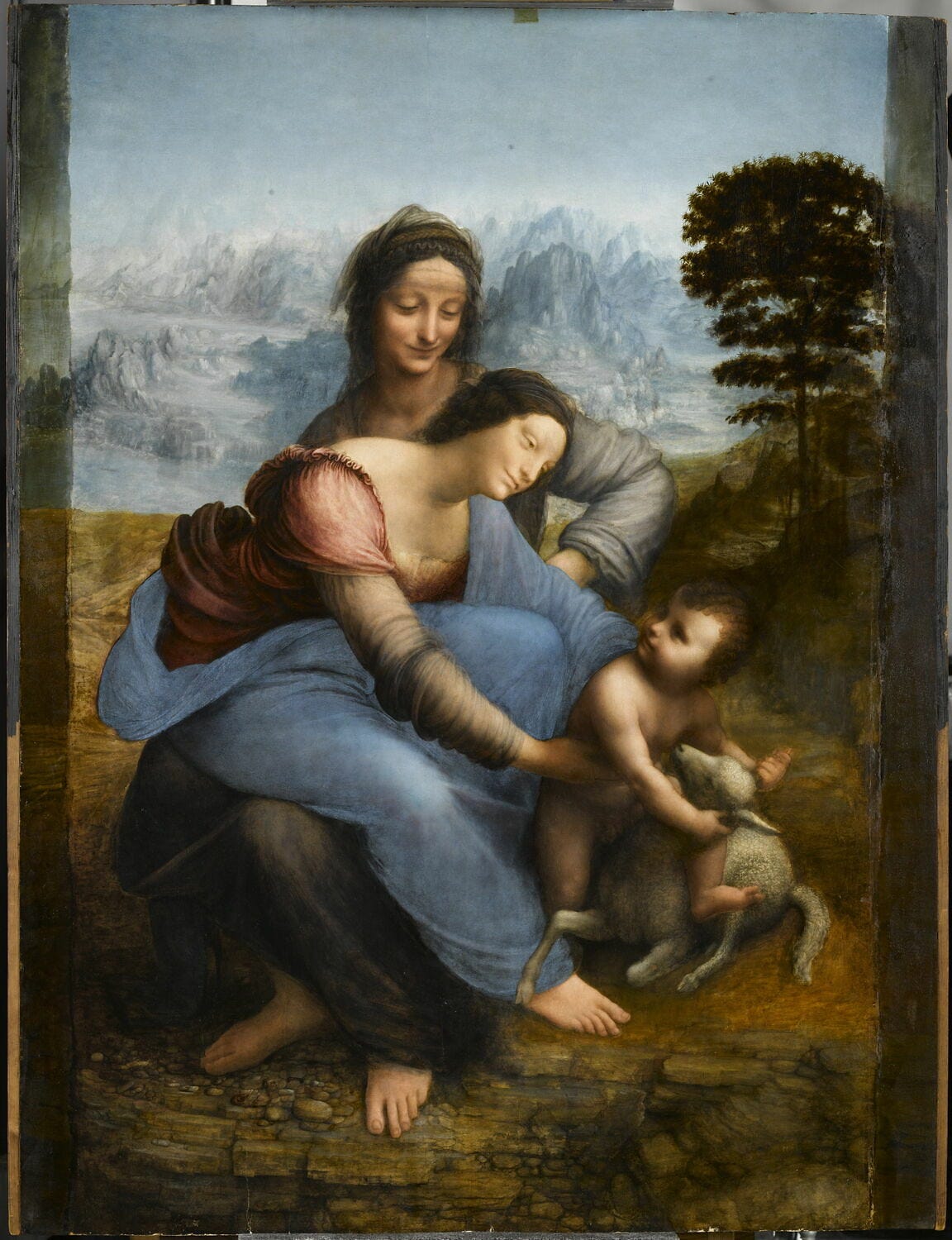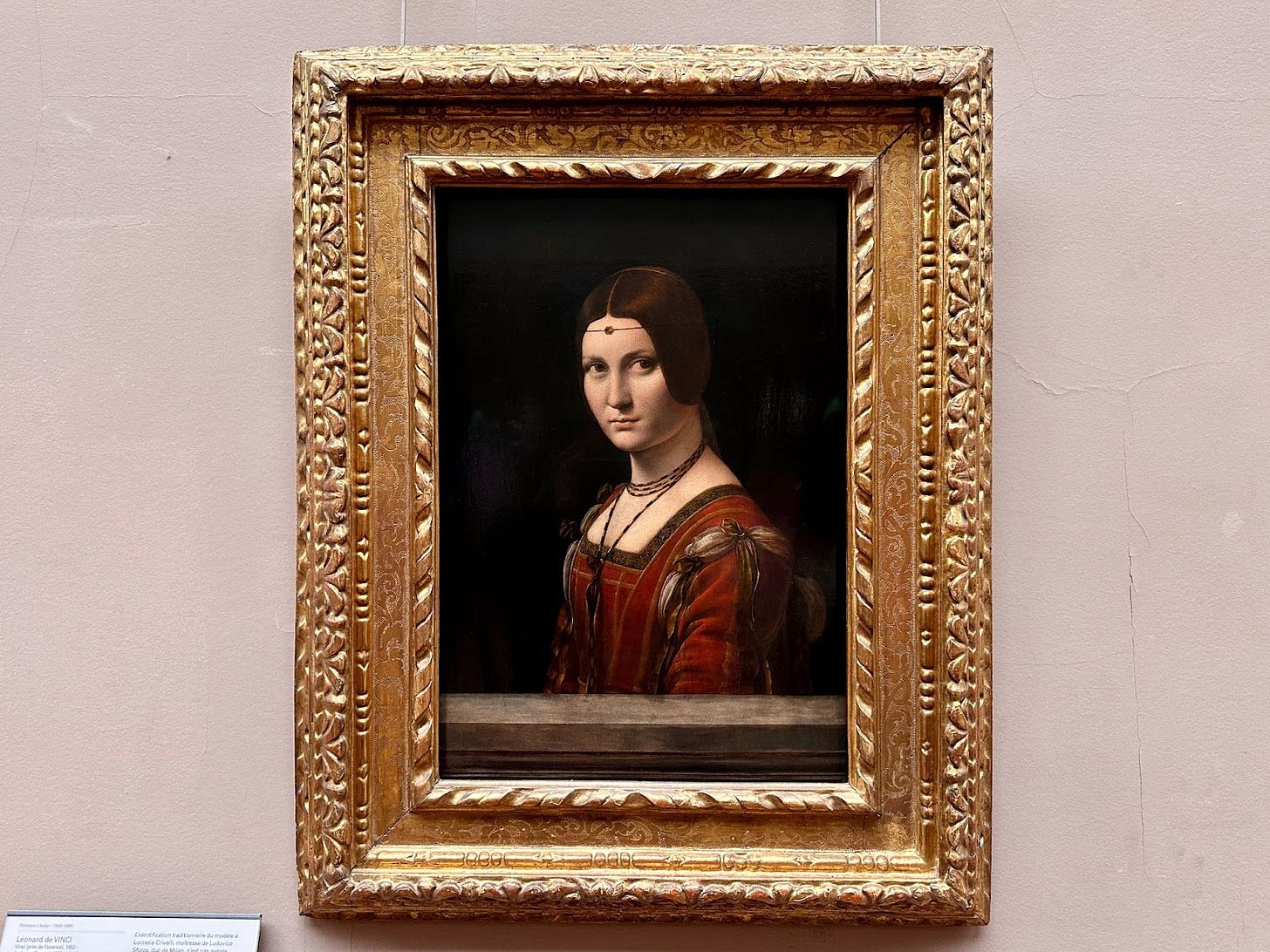Dear little demon,
Welcome to the edition #54 of The Art Missive. We are 24,803 😈 in this newsletter and whether you've been here from the start or just arrived, thank you so much for reading ❤.

If you haven't already, you can also:
Read all the previous Art Missives
Ask your questions for the next QaAs here
In this Missive:
1/ Intro.
2/ Louvre.
3/ Less is more.
3/ Fundamentals.
4/ Be curious.
5/ A new superpower.
1/ Intro.
Remember the last edition of The Art Missive? I shared some big news, including my plan to learn painting with the talented Vladislav Yashin. That’s why this week, I’m going to Paris to meet my new mentor.
So, I arrived in Paris, where I lived for 3 years before heading abroad. Coming back here with fresh eyes, something struck me: Paris is a real haven for artists.
Here, you'll find breathtaking architecture, the most historic art shops where artists like Cézanne or Picasso have passed through, a vibrant and bohemian atmosphere that's incredibly inspiring and above all... the most beautiful art collections in the world.
No wonder an artist like Vladislav Yashin has made it his home. Paris is where any art enthusiast can walk in the footsteps of their favorite artists. And since my classes with Vladislav don't start for a few more days, why not begin learning from other great artists right now?
Welcome to edition #54 of The Art Missive, where I’m taking you along to the Louvre, the world's most visited museum, for an afternoon with Leonardo da Vinci.
2/ Louvre.
The Louvre is probably one of the most exquisite jewels in French heritage (after cheese and wine, of course). And as usual, the palace was bustling with tens of thousands of visitors today. Fortunately, this time around, I had a specific goal in mind that spared me from wandering through the crowded halls filled with tourists. Today, I wanted to focus on just one artist: Leonardo da Vinci.
Mainstream, you might say.
I would respond that precisely because he is the most acclaimed artist in all of human history, it's worth braving the crowds just for the privilege of seeing four works with my own eyes:
Leonardo da Vinci, Portrait of a Lady from the Court of Milan, also known as La Belle Ferronnière
Leonardo da Vinci, The Virgin and Child with Saint Anne
Leonardo da Vinci, The Virgin of the Rocks
And of course, Leonardo da Vinci, The Mona Lisa.
Here's what I learned.
3/ Less is more.
The first thing I learned from this encounter with Leonardo da Vinci is that he created very few works. In fact, the study of Da Vinci's life by the Louvre has shown that it could take him years, even decades, to complete a single painting. For him, painting was about the ability to recreate a world, akin to the power of a god—a significant task that requires time and dedication.
For instance, the painting you see above, The Virgin and Child with Saint Anne, took Leonardo 16 years and hundreds of studies of plants, drapery folds, and anatomy to complete.
And naturally, it struck a chord with me.
In recent years, I've seen my relationship with art completely undermined by social media, new technologies, and the ever-faster pace of life. What I observe is that we're all caught in an infernal spiral, pushed to perform quickly and without a rest.
Leonardo da Vinci, though he comes from a completely different era, reminds us that creating is sacred. Neither glory nor the desire to please should prevent us from taking the time we need to build something meaningful.
4/ Fundamentals.
This portrait, just like the Mona Lisa, undoubtedly had the greatest impact on me.
You might think that big art lies in immense size, bold colors, or sophisticated subject matter. But with Leonardo da Vinci, it's the complete opposite: he shows us that mastering the fundamental skills to the highest degree can make a big impact—a fact that's often forgotten in art.
Take La Belle Ferronnière and the Mona Lisa for example. Leonardo's genius shines through in four simple things:
A perfectly controlled play of light.
An ambiguously subtle expression that is difficult to discern.
Smooth, lifelike movement that adds intrigue.
A clear visual hierarchy, where a high level of detail coexists with simplified areas to guide the viewer's gaze.
Leonardo didn't need fancy tricks to change history. And guess what? It's not his flashiest works that stand out in the world's most popular museum. It's the Mona Lisa, the small 77 × 53 cm portrait of a woman simply sitting and gazing at us.
And that certainly makes us ponder what truly makes an exceptional work of art.
5/ Reality.
I wrapped up my afternoon by analyzing The Virgin of the Rocks—an artwork that reveals a characteristic trait of Leonardo da Vinci: his thirst for understanding the world.
His real impact likely came from blurring the lines between art and science. Beyond his paintings, his notebooks depicted an artist driven by boundless curiosity for science, which he employed in service of art. For instance, to paint the Virgin of the Rocks, he delved into the study of plants, rocks, and anatomy for years.
This realization taught me two things:
Firstly, I understood that simply observing a reference isn't enough to capture its reality and turn it into art. In his masterclass at New Master Academy, artist Miles Yoshida explained how he watched his cat for months before creating a piece. He studied it, drew it in various positions, and sometimes exaggerated its anatomy to capture its real movement and dynamics. Similarly, Leonardo da Vinci would distort bodies or animal anatomy to capture the true essence of their movement.
Secondly, what I also learned from The Virgin of the Rocks is that to be a good artist, we must step out of our bedroom and go live with more experiences. Experiencing life broadens our sources of inspiration and allows us to create works with increased emotional depth and authenticity.
6/ A new superpower.
Now, I'm even more excited for my painting classes with Vladislav Yashin. As I left the Louvre today, I realized something truly transformative: painting is a superpower. It's the ability to bring entire worlds to life from nothing, to touch people's hearts and to make a difference.
I'll leave you to reflect on that, and I'll catch up with you next week.
That's all from me, see you next week! 😈
Léa










What a lovely and thought-provoking article. I must agree with your observations of both Da Vinci's works and his place in the Art Halls of Fame. The Louvre was such a profound experience for me, but I was never quite able to put it into words. This article, however, does a fantastic job of expressing the thoughts and feelings so akin to my own.
Thank you!
I've wondered for a long while now--why haven't France, Italy, Spain, etc had a large number of world-renowned artists? Post WW2, and so on. They have such a deep history. It baffles me.